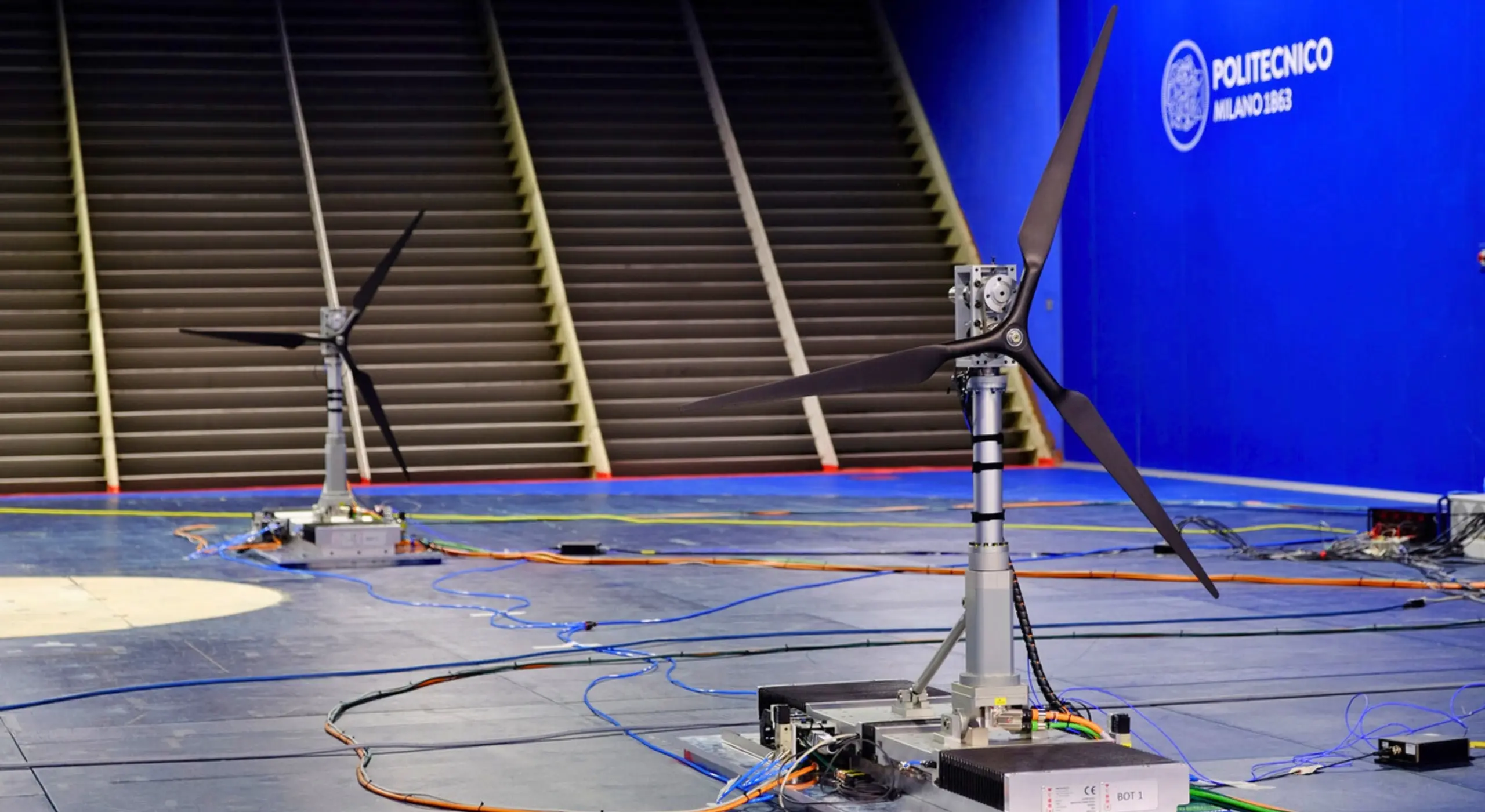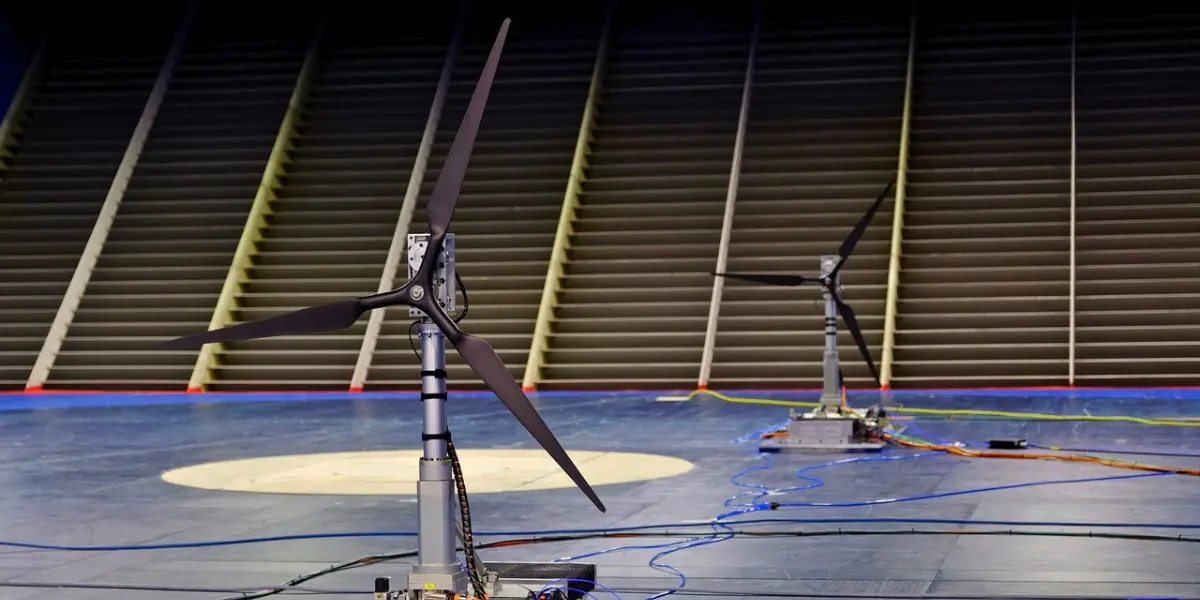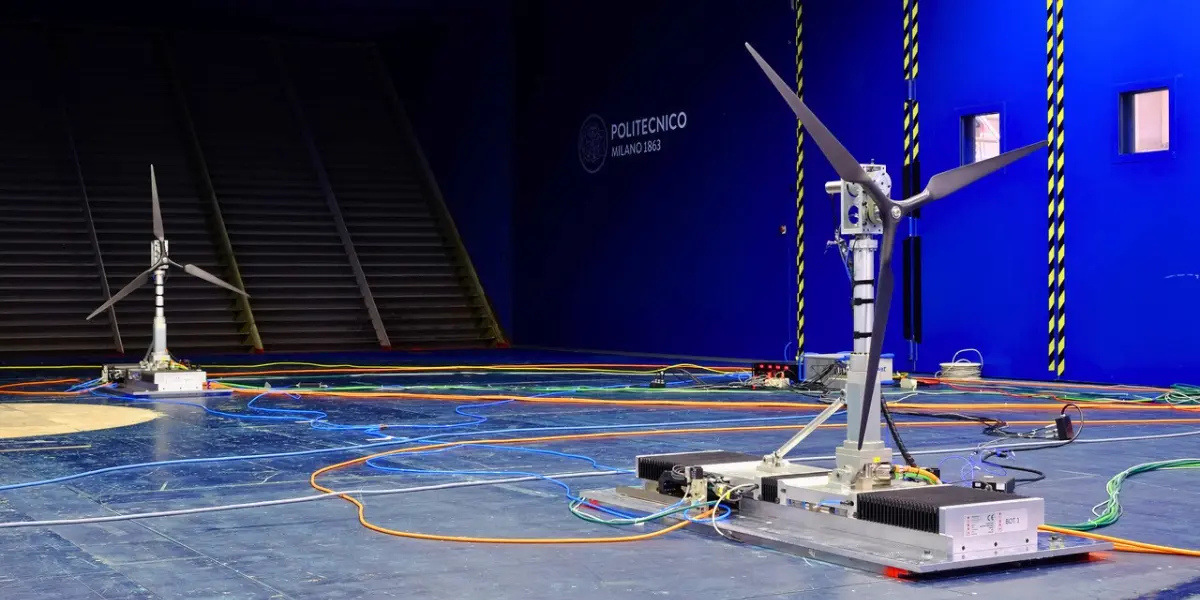Wind dynamics among floating turbines: new experiments for the energy transition in the Mediterranean sea
Experimental research on aerodynamic interactions between floating wind turbines in a wind tunnel

Wind energy is undergoing rapid technological evolution to meet the growing demand for clean, reliable, and sustainable power. Among the most promising innovations are floating wind turbines, which allow the exploitation of strong and steady winds in deep-water regions, such as the Mediterranean Sea, where fixed-bottom foundations are not feasible.
As part of the NEST project, funded by Italy’s National Recovery and Resilience Plan (PNRR), we are conducting a series of experimental studies to address challenges facing floating wind power. Our objective is to gather high-quality experimental data to improve simulation tools and to provide practical guidance for the design of more efficient and robust floating wind systems.
A critical area of focus involves the aerodynamic interactions between turbines. Each wind turbine extracts energy from the wind and generates a wake, a turbulent, lower-energy flow that impacts downstream turbines, reducing their power output and increasing mechanical loads. In floating systems, the motion of the platforms caused by waves and wind modifies the dynamics of these wakes, making turbine-to-turbine interactions even more complex and harder to predict.
Our new wind tunnel campaign explores these wake interactions. After previously analyzing the wake generated by a single floating turbine subject to platform motions, we have now introduced a second turbine downstream to study how the wake of the first affects the aerodynamic loads and performance of the second. Thanks to a robotic system specifically designed to reproduce realistic platform motions, we can simulate dynamic offshore conditions with high accuracy.
The experimental data enable us to characterize velocity fields, flow unsteadiness, and aerodynamic forces in transient conditions. These data are key to developing advanced numerical models capable of predicting the behavior of entire floating wind arrays and to designing control strategies that optimize energy production and maximize the fatigue life.
The results are relevant to both academia and industry, contributing to the improvement of offshore wind energy technologies. The experimental work is part of a broader research and innovation strategy, in which the synergy between experiments and numerical simulations allows us to explore complex scenarios and propose concrete solutions to problems in the offshore wind sector, enabling us to design the floating wind farms of the future.

